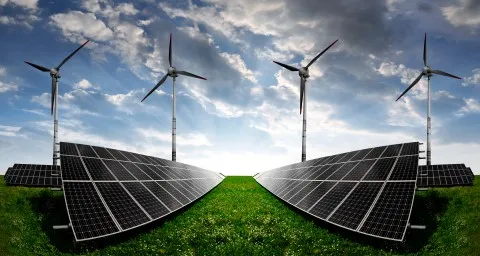
Rapid renewables growth could push Japan to surpass government targets
The government’s 22-24% renewables penetration target by 2030 falls short of the grid’s actual potential of at least 40%.
Japan’s power system can accommodate a larger proportion of variable renewables in its energy mix than what is provided for in the government’s 2030 targets, and still be able to maintain grid stability, according to an independent study by Japan’s Renewable Energy Institute (REI) and Agora Energiewende.
The analysis compared two scenarios for the year 2030: the government’s target scenario, which provides for a renewables penetration level of 22–24% (64GW solar and 10GW wind), and a more ambitious scenario (100GW solar and 36GW wind) and how the systems would respond at a number of extreme snapshots involving very high nonsynchronous renewables penetration levels (wind and solar energy).
At these levels, conventional power plants would be displaced, thereby pushing down the inertia limits that play a key part in ensuring the Japanese power system’s frequency stability.
Also read: 7-8GW of bottom-fixed offshore wind can be built in Japan by 2030: Ørsted
To ensure stability, Japan could look into the use of renewables-based fast frequency response (FFR) services to allow instantaneous variable renewables penetration levels to rise to around 70% in western Japan and up to 60% in the eastern synchronous area, the report’s authors noted.
In the absence of FFR services, instantaneous penetration levels would only reach around 60% in western Japan and 50% in the eastern area, confirming the trends observed in 2018 in regions such as Kyushi and Shikoku, where hourly variable renewable energy sources (VRES) infeed covered 84% and 79% of demand, respectively.
“By 2030, these high regional infeed levels could become the norm for the Japanese system as a whole,” the report’s authors noted, adding that instantaneous infeed levels above the thresholds could begin to challenge the system’s frequency stability limits. “This situation would only rarely ensue in the more ambitious renewables scenario, however, and would almost never occur in the governmental scenario.”
Another solution could come in the form of introducing instantaneous penetration (SNSP) limits and curtailing renewables infeed above these thresholds, which could lead to curtailment levels of under 2% of annual renewable generation in the more ambitious renewables scenario.
A higher renewable share of 40% could also be achieved on the same stability assumptions, with only a very small increase in the curtailment level to 4% of annual renewable generation. This would be possible even on the assumption of a significant reduction in conventional thermal generation such as coal and nuclear by 2030.
“Given the rapid growth of renewables over the last five years, even the 40% share would seem a conservative figure and could be reached before 2030,” the report’s authors noted.
Wind and solar to maintain grid stability
Meanwhile, the report cited that wind and solar energy systems could contribute to maintaining grid stability in situations where high levels of variable renewables may pose a challenge for grid operations. For instance, some wind turbines and solar stations can be kept throttled down so that they can quickly power up in the event of a sudden loss of frequency.
According to Agora Energiewende’s executive director Patrick Graichen and REI’s director Mika Ohbayashi, whilst the proportion of variable renewables in the Japanese system is increasing, it still remains rather low, at around 7%.
“Concerns over whether renewables can be efficiently integrated into Japan’s power grids without endangering grid stability have raised the spectre of a renewables slowdown in the country. International experience has shown, however, that a number of technical measures that are not yet widespread in Japan can be safely implemented to improve grid stability,” they highlighted.
Also read: 2 in 5 institutional investors eye Japan's renewables market
Alongside renewables-based FFR, the report noted that there is a range of other alternatives for quickly balancing frequency without the rotating masses of conventional generators. These include battery storage systems, HVDC converters, flywheels, and the retrofitting of old nuclear reactors.
The Agora-REI study recommended that regulatory bodies implement non-discriminatory market rules for renewables integration to allow for RES to assume greater responsibilities within the power system as a whole. It also suggested that system operators make use of the capacity of VRES to maintain frequency stability and provide balancing power and voltage control.
“In all such cases, system operators should diversify their portfolio of service providers,” the report’s authors commented, adding that an increase in the transparency of the grid and power system data is also needed for long-term planning.













 Advertise
Advertise











